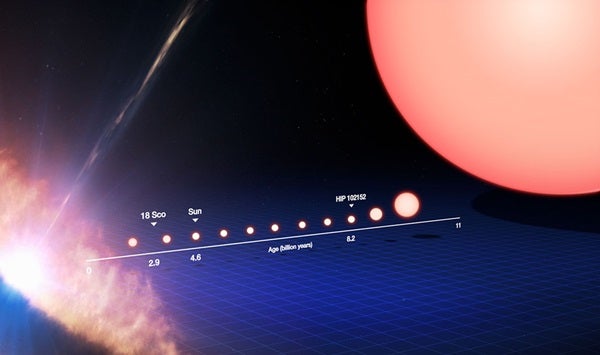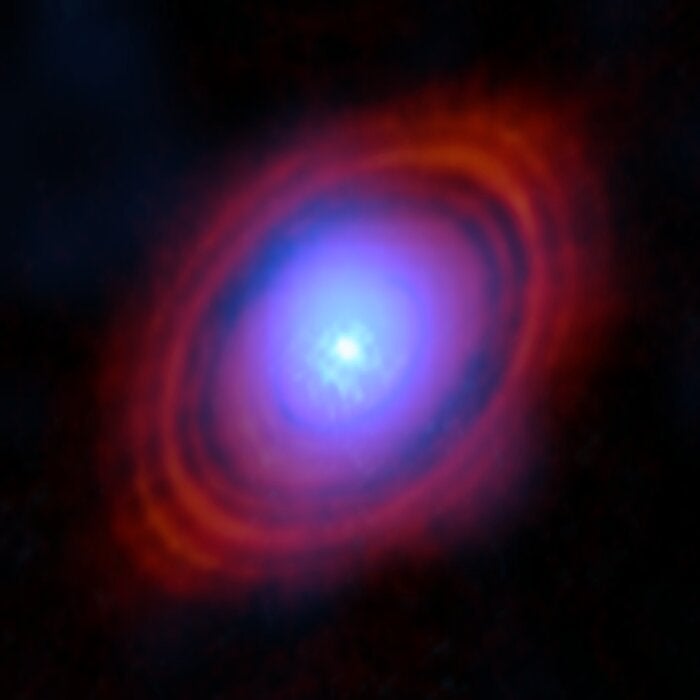Astronomers have only been observing the Sun with telescopes for 400 years — a tiny fraction of the Sun’s age of 4.6 billion years. It is very hard to study the history and future evolution of our star, but we can do this by hunting for rare stars that are almost exactly like our own but at different stages of their lives. Now, astronomers have identified a star that is essentially an identical twin to our Sun, but 4 billion years older — almost like seeing a real version of the twin paradox in action.
“For decades, astronomers have been searching for solar twins in order to know our own life-giving Sun better,” said Jorge Melendez from the University of São Paulo in Brazil. “But very few have been found since the first one was discovered in 1997. We have now obtained superb-quality spectra from the VLT and can scrutinize solar twins with extreme precision — to answer the question of whether the Sun is special.”
The team studied two solar twins — one that was thought to be younger than the Sun, 18 Scorpii, and one that was expected to be older, HIP 102152. They used the UVES spectrograph on the VLT at ESO’s Paranal Observatory to split up the light into its component colors so that the chemical composition and other properties of these stars could be studied in great detail.
They found that HIP 102152 in the constellation Capricornus the Sea Goat is the oldest solar twin known to date. It is estimated to be 8.2 billion years old, compared to 4.6 billion years for our Sun. On the other hand, 18 Scorpii was confirmed to be younger than the Sun — about 2.9 billion years old.
Studying the ancient solar twin allows scientists to predict what may happen to our Sun when it reaches that age, and they have already made one significant discovery. “One issue we wanted to address is whether or not the Sun is typical in composition,” said Melendez. “Most importantly, why does it have such a strangely low lithium content?”
Lithium, the third element in the periodic table, was created in the Big Bang along with hydrogen and helium. Astronomers have pondered for years over why some stars appear to have less lithium than others. With the new observations of HIP 102152, astronomers have taken a big step towards solving this mystery by pinning down a strong correlation between a Sun-like star’s age and its lithium content.
Our Sun now has just 1 percent of the lithium content that was present in the material from which it formed. Examinations of younger solar twins have hinted that these younger siblings contain significantly larger amounts of lithium, but up to now scientists could not prove a clear correlation between age and lithium content.
“We have found that HIP 102152 has very low levels of lithium,” said TalaWanda Monroe from the University of São Paulo. “This demonstrates clearly for the first time that older solar twins do indeed have less lithium than our own Sun or younger solar twins. We can now be certain that stars somehow destroy their lithium as they age, and that the Sun’s lithium content appears to be normal for its age.”
A final twist in the story is that HIP 102152 has an unusual chemical composition pattern that is subtly different to most other solar twins, but similar to the Sun. They both show a deficiency of the elements that are abundant in meteorites and on Earth. This is a strong hint that HIP 102152 may host terrestrial rocky planets.









